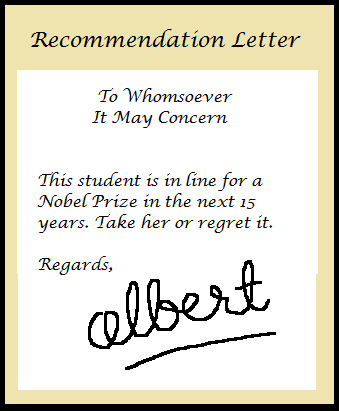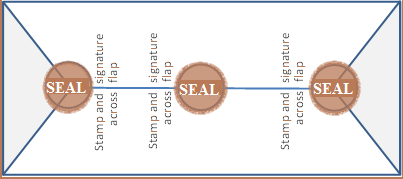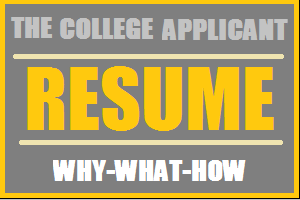 The transcript is an official summary of your academic performance and progress to date. It is one of the key documents you have to submit when you are applying for admission to a doctoral or master’s program of studies in an American college or university (the others are the statement of purpose, recommendation letters, a resume and of course your GRE and TOEFL scores). In order for the transcript to be acceptable to American universities as an official document, it must conform to the following specifications – it should be:
The transcript is an official summary of your academic performance and progress to date. It is one of the key documents you have to submit when you are applying for admission to a doctoral or master’s program of studies in an American college or university (the others are the statement of purpose, recommendation letters, a resume and of course your GRE and TOEFL scores). In order for the transcript to be acceptable to American universities as an official document, it must conform to the following specifications – it should be:
- printed on the university or college letterhead
- signed by the appropriate college or university authorities i.e. the college principal or registrar or the university registrar
- in the format required by American universities (not in the ordinary mark sheet format usually provided by Indian colleges and universities)
Finally, the transcript should also be sent to the American university in a sealed envelope bearing the stamp and signature of the appropriate authorities as indicated in the illustration below.
Remember that a transcript is not merely a mark sheet, nor is it the same thing as a degree certificate. A degree certificate just says you have certain qualifications but, a transcript provides several additional details. That is, apart from the name of the course you studied, the duration of your studies, the date of completion of the course and the name of the college or university where you studied (some of which are already in the degree certificate) the transcript also gives the following:
- information about your course of study – the examination scheme and a comprehensive mark sheet and
- the histories and highlights of your college and your university
As you can see from this, a transcript also contains much more information than a standard mark sheet usually does. An overview of the items covered by or included in the transcript is given below:
- a ‘bona fide certificate’
- the examination scheme
- the ‘mark sheet’ section
- the highlights and history of your college or university (in brief)
For a more detailed description click here. Click here to download a sample transcript.
Having read all this, you now know:
- the difference between a degree certificate, a mark sheet and a transcript
- you also know the details that must be included in your transcript and
- the specifications it must meet in order to be acceptable to American universities as an official document
You also have access to a sample transcript
Our next transcript blog will explain the various types of transcript and why these types are required.
 Your transcript should contain the following:
Your transcript should contain the following:
- a ‘bona fide certificate’ containing:
- your name
- the name of the college where you studied
- the name of the course you studied
- the duration for which you were at the university/college and date of completion of the course
- the examination scheme which, includes details such as:
- whether all subjects are compulsory or whether there are elective subjects, a project etc.
- the number of semesters in the course and the duration of each semester
- the duration of each lecture
- the minimum marks required to pass in a subject
- the maximum number of grace marks that may be given so that a student may pass or obtain a higher class
- the score scheme used: grade point average (GPA) or aggregate percentage/class system
- the ‘mark sheet’ section which, states:
- the breakup of subjects studied in each semester
- the number of hours per week for lectures and practical work in each subject
- the maximum marks per subject
- the marks you obtained in each subject
- your total marks, percentage (or relative grade), class and relative rank in the class, college or university in each year
- the highlights and history of your college or university (in brief)
Related Links
September 2013
Here’s your checklist of tasks for this month – and note there’s a lot of heavy documentation work that you have to be doing, so be prepared to do a lot of running around to your college and your university
- Arrange for 10-13 sets of transcripts in sealed covers from your college or university – some universities insist on university transcripts
- Choose your recommenders (generally 3 recommendations are required, at least one of which should be from the educational institute last attended) and give them the necessary details – resume, copies of your mark sheets etc.
- Start working on your Statement of Purpose (target date for completion 31 October 2013) and resume
Note: for the full schedule see: timeline for fall 2014
Related Links:
 Recommendation Letters – What They are and Who You Should Get Them From
Recommendation Letters – What They are and Who You Should Get Them From
In the context of higher education in America, recommendation letters are statements by teachers, supervisors or employers which highlight your qualities, background and achievements and show that you are a good candidate for a doctoral or master’s program of studies.
To make sure that you are an applicant of good caliber every university will ask you to submit at least 3 recommendation letters along with your application form. If you are a student, these recommendation letters should come from teachers who have taught you important subjects or supervised relevant project work, research papers or seminars. If you are a working professional and your work experience is relevant to the field you plan to do your degree in, one letter can come from your immediate superior in the organization (if you have been working for a very long time then you can take letters from two people in organizations you have worked with, but at least one recommendation should be academic).
Recommendation letters only carry weight if the recommender knows you well enough to offer specific and substantial insights into your academic work and your qualities as a student, a person and a worker. American professors (and others on the selection committees) are very interested in getting in-depth information about you because once they admit you, they are going to have to interact with you in classrooms, labs and other contexts; and they will have to work with your potential (and live with your problems!) for the next 3-5 years. Most important they want to ensure that the students that they admit will bring credit (and not discredit) to the institution. A recommender who really knows you can tell them which of those outcomes it is going to be. They therefore give great weight to the depth of association that your recommender has with you but, little to his or her post (unless it is someone they know and really respect – like Albert Einstein in the mock recommendation letter at the top of this post – but that is not going to happen with most letters of recommendation from Indian professors).
Thus, if you are a student, you should choose to take recommendation letters from people who:
- know you well – professors who have taught you several relevant subjects and have interacted extensively inside and outside the classroom or, guides who have supervised your projects, research papers or, seminars; these would be better choices than heads of departments or principals who generally do not know you that well
- can speak highly of your work and compare you favorably with your peers – if you want a recommendation letter you should have or have done something to deserve that recommendation letter that your prospective recommender has seen:
- an unusual depth of interest in the subject and a drive to know more about it
- originality, perseverance and insight in handling problems that came up in your project
- confidence, clarity and a command over your subject during your seminar presentation etc.
If you are a working professional, keep in mind that supervisors who have actually overseen your work in projects and have reasons to speak highly of your work are in a better position to talk about your potential as a research student than people who are higher up in the organization but have not actually seen you at work.
Finally, your recommender should:
- know your educational goals and be supportive of them (sometimes a problem with employers who do not want to let you go!)
- be able to write persuasively and well
- and have good credentials himself or herself
So be careful about who you get your letters from – otherwise you may end up wasting a lot of time and effort to get recommendations that do not really count!
PS Look out for some great sample letters of recommendation in part 2 of this blog “Recommendation Letters – Part 2: Ingredients of a Good Recommendation Letter“. Coming soon!
In the mean time here is a related link to a superb set of guidelines for recommenders by Shriram Krishnamurti, a professor of computer science at Brown university. They are among the best available on the web.
Also, check out this link to an upload by Massachusetts Institute of Technology about asking for a recommendation letter:
Resumes (pronounced re-syoo-mayz) are included in your application for an American university for three reasons:
- firstly, to give the admissions committee a brief snapshot of your academic performance – academic performance carries great weightage in deciding whether you will be admitted or not and in some universities admissions committees form their first impressions of your academic performance by looking at your resume
- secondly, to present your qualifications for a research or teaching assistantship – for this reason remember to attach a covering letter to your resume requesting that it be circulated to interested professors
- thirdly, to provide details of projects, seminars, industrial training etc. that you could not include in your SOP because of the word limit
The Resume and What It Covers
A resume, is a written summary of your relevant academic and professional qualifications, background and achievements. It includes:
- Names of important subjects studied and percentage/GPA in every academic year (very important, as explained in the first point above)
- Details of projects, papers and seminars done – include the name and aims of the project and the degree to which you succeeded in achieving the aim (in elaborating this you can also include the rank of your project etc. among the others in your class)
- Details of any relevant work experience/industrial training you have had – state the name of the organization, your designation and role, the duration and dates of your experience and achievements if any
The resume will also, of course, include your contact details i.e.:
- Your name (put in your full name, not pet names or short forms)
- Postal address
- E-mail ID (and website, if any)
- Telephone number
Links:


